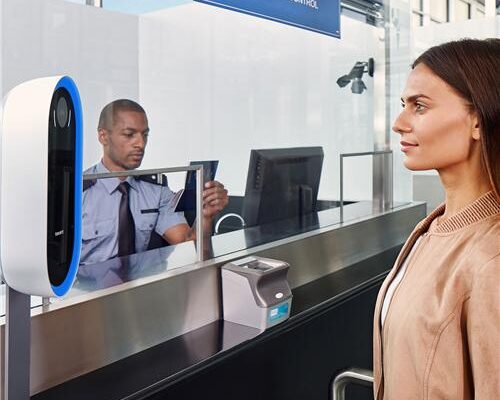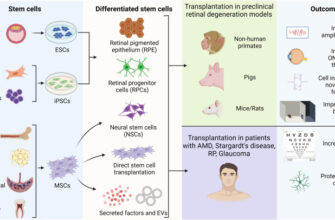Starting September 1st, Russian railway passengers are poised to experience a significant evolution in their travel routines. A new government decree will introduce the option of purchasing tickets and, more notably, boarding long-distance and high-speed trains using biometric identification. This move marks a noteworthy stride towards integrating advanced digital solutions into everyday public transport, promising a more efficient and potentially faster travel experience for millions.
How the Future of Boarding Unfolds
The innovation centers around Russia`s Unified Biometric System (EBS). For passengers to leverage this newfound convenience, a crucial step is the prior registration of their biometric data within the EBS. Once this preliminary setup is complete, the process on the day of travel is designed for maximal simplicity: gone are the days of frantically rummaging through bags for a physical ticket or even a passport. Instead, passengers will merely present themselves to the conductor.
As Konstantin Yaroslavsky, advisor to the General Director of the Center for Biometric Technologies, explains the anticipated operational flow:
“It is assumed that the conductor will have a tablet. A person who has previously registered their data in the Unified Biometric System can approach the conductor during boarding, look into the tablet’s camera, confirm their identity, and board the train without presenting a passport. It’s important to understand that this service will only work for citizens who have registered their data and have also activated the corresponding service, meaning they have given consent for data processing within a specific user scenario. No additional equipment will be needed; these will be special licensed devices from Russian manufacturers that can be used for boarding.”
This hands-free verification process aims to significantly streamline the pre-departure routine, moving travel from paper-and-plastic to pure presence.
The Allure of Speed and Uninterrupted Journeys
The primary, and most compelling, benefit touted for biometric boarding is a tangible reduction in the time spent queuing at the gate. Yaroslavsky elaborates on the anticipated efficiency gains, offering a precise projection:
“Checking a passport usually takes 15-20 seconds. Plus, you need to consider that you are standing with suitcases, rummaging in your pocket or bag, looking for your passport. The matching of the document with the list of passengers the conductor has takes about 15 seconds. But you also prepare to present your passport for another 15 seconds. We believe that the use of biometrics will reduce the boarding time by approximately half, from 30 seconds to 10-15 seconds overall.”
This efficiency isn`t just about saving individual minutes; it’s about alleviating congestion, minimizing queues, and enhancing the overall passenger flow. For railway operators, this could translate into smoother operations and potentially more punctual departures.
Navigating Connectivity and Cultivating Trust
A technological leap of this magnitude naturally invites scrutiny, particularly regarding practical implementation challenges such as ensuring reliable internet connectivity across Russia`s vast and diverse geographical expanse. Andrey Blinov, an analyst at ICT-Online.ru, addresses these concerns by suggesting pragmatic solutions:
“From the standpoint of organizing uninterrupted communication networks, of course, the first option, and the most obvious, is Wi-Fi, which, as is known, is less susceptible to all these current limitations and interruptions. The second possible option is the organization of local private mobile networks. That is, the operator installs base stations in a certain perimeter and thus provides communication in a specific territory. How this will be implemented is hard to say; perhaps they will give guidance to each carrier.”
Crucially, the system is designed with a reliable fallback. In the event of a technical hiccup or system unavailability, traditional passport verification remains a viable and readily available option. This dual-method approach ensures that even as Russia embraces advanced solutions, the fundamental reliability of conventional methods is maintained, ensuring no passenger is, ironically, left stranded by a technological hiccup.
Public trust in biometric systems is an ongoing global conversation, especially concerning data security and privacy. While the EBS has been in operation for some time and is utilized by various financial institutions, initial concerns about mass data leaks are valid. However, experts note that thus far, there haven`t been widely reported incidents of large-scale biometric data breaches from the system, suggesting a foundation of robust security protocols.
A Glimpse into the Broader Digital Horizon for Travel
The approval for biometric train boarding, initially announced in February and following extensive closed testing phases, is a standard procedure for large-scale technological rollouts. This initiative is not an isolated event; rather, it reflects a broader global trend towards integrating biometric solutions into various facets of daily life, from banking transactions to airport security checkpoints. It represents a bold step towards a more digitized and streamlined future for public transport infrastructure.
While the allure of seamless, hands-free travel is undeniably appealing, the ongoing discourse around data privacy and the careful handling of sensitive personal information remains paramount. Russian authorities emphasize user consent and the secure processing of data within specific user scenarios, aiming to strike a balance between modern convenience and robust security measures. As Russia prepares to roll out biometric train boarding, it marks a fascinating chapter in the ongoing evolution of travel. Passengers now have a clear choice: embrace the swift, modern path or stick to the tried-and-true paper trail. Either way, the journey continues, perhaps just a little faster and a bit more `scanned` than before.









